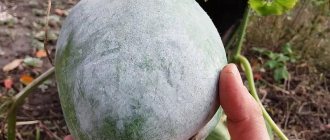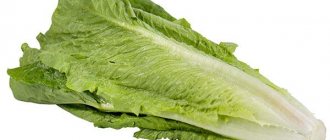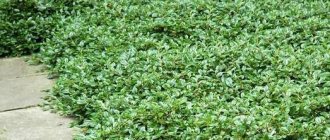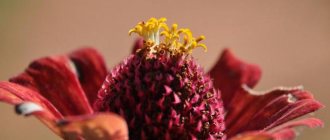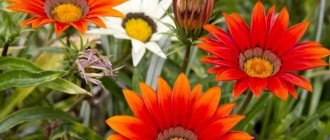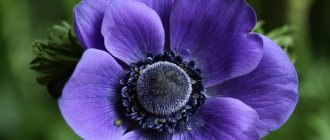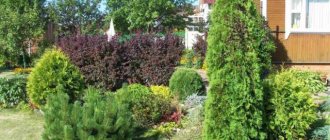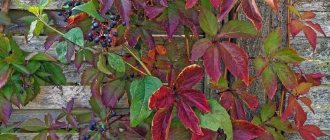In addition to growing traditional crops such as potatoes, tomatoes, and onions, it would not be a bad idea to leave a bed for planting herbs that have medicinal properties. These include oregano or oregano; the plant is also called motherwort or incense.
In cooking, oregano is used as a spice; healthy and tasty tea is brewed from the flowers. Mother planting will protect your garden from pests - the spicy aroma will repel them. If you put a few dry branches of the motherboard in the closet, moths will not be scary.
Are oregano and oregano the same thing?
Yes, these are two synonymous names for the same plant. The name oregano is Russian, and oregano is Latin (Origanum).
Oregano is often grown on an industrial scale to produce essential oil. Oregano is an excellent honey plant and is widely used in cooking (orenano spice).
Oregano is a perennial herbaceous plant of the Lamiaceae family. The root system is creeping, which promotes active growth. The height of the erect stems is 30-70 cm. They are covered with small obovate leaves with pointed tips.
Appearance
Oregano is a perennial plant that produces a fairly strong, characteristic odor.
It has a straight, rigid and raised stem, which is quadrangular in cross section. The stem is branched, can reach up to 100 cm in height, however, mostly lower - it grows up to 40-70 cm in height, green or reddish (sometimes even purple) in color and all fluffy. The stem grows from an underground, highly branched rhizome, which has many tendrils. Oregano leaves are juicy, bright green, ovoid in shape, with blunt ends, sometimes slightly jagged; small dots can be seen on the surface - these are glands that secrete essential oils with a characteristic odor.
Oregano blooms from July to September. The flowers are collected in small bunches at the tops of the shoots. They can be white, pink, or red in color. Oregano flowers are honey-bearing and attract many insects, with the help of which they pollinate. The fruit is formed by 4 dry round nuts, brown or brown in color, appearing in late autumn.
Place to grow oregano
Common oregano cultivation and care in open ground photo
In order for oregano to grow well and accumulate useful substances in the leaves, as well as to please with lush flowering, it is necessary to select an area illuminated by sunlight. When grown in the shade, the stems become excessively elongated and the spicy aroma is weakly expressed.
The plant is unpretentious to the type of soil, but clay soils and acidic soil reaction are contraindicated. Since we are talking about perennial cultivation, plant oregano in an area with nutritious soil. Avoid dampness; if groundwater is close, build a high bed.
It is advisable to add humus or rotted compost for digging about 1 month before sowing; you can replace it with saltpeter.
Many oregano fans try to grow the herb on the windowsill. To obtain high-quality raw materials, it will take at least 1 year, because flowering begins in the second year of the growing season.
Variety of oregano
When choosing a variety of aromatic spice, pay attention to its purpose. When breeding different varieties, breeding scientists focused on decorative properties and aroma quality, spicy qualities (the ability to be used as a spice or for making tea), and high yield. The varietal names speak for themselves:
- White oregano is a white decorative, high-yielding variety.
- Honey Aroma is a red productive variety with a strong aroma. Height up to 35 cm.
- Caramel has excellent spicy properties.
- Rainbow – has enhanced medicinal properties. Reaches a height of 60-70 cm.
Gardeners will probably want to try decorative varieties bred abroad:
- Variety is a small but spreading shrub with white fragrant flowers and greenish-golden foliage. Good flavor.
- Beauty Kent is a variety intended for planting in flower pots and decorating the veranda. The flowers and tassels of the plant have different colors.
- Herrenhausen is an attractive oregano with clusters of purple inflorescences.
Please note that the bushes are of different sizes. Large ones will require a larger area when planting and greater distance between plants.
Growing oregano from seeds for seedlings at home
Oregano seeds photo
Oregano is often grown by seedlings, since the seedlings are weak and can easily be drowned out by weeds. For garden cultivation, it is more practical to grow seedlings to obtain more viable plants. Seeds can be sown immediately in open ground, but most often this is done when grown on an industrial scale.
Start sowing seedlings in March: the earlier you sow, the better, the sprouts will become well established before transplanting into open ground. For sowing, take a wide container (plastic container, wooden box or a special one for growing seedlings). The soil needs to be nutritious; for looseness, add coarse sand; you can take a universal substrate for growing seedlings.
- Fill the sowing container with soil, level the surface, compact it a little, and spray with a fine spray.
- Make furrows, pressing with a ruler, sow the seeds, the planting depth should be no more than 1 cm.
- Place on a windowsill with diffused lighting (window facing east or west), maintain the air temperature within 20-22 °C.
- When growing seedlings, the crops are usually covered with film, but for germinating oregano seeds this measure is not necessary.
- Expect seedlings to appear within 10-15 days. The sprouts are very thin, striking in their fragility - at first you are even afraid to touch them, but over time they will get stronger.
Carefully inspect the plantings and remove weeds, because they can choke out thin seedlings. Thin out shoots that are too dense so that they do not interfere with each other.
Oregano oregano from seeds photo shoots
Periodically moisten the seedlings by spraying with a fine spray. This amount of water is enough for seedlings, and you will also protect the roots from being washed out.
Rotate the container with seedlings so that they do not grow one-sided.
After 2-3 true leaves appear, plant the oregano sprouts in separate containers (clay pots or plastic cups). Be very careful, separate together with the earthen lump and replant.
Oregano seeds photo seedlings
By mid-May, the seedlings will be ready for transplanting into open ground. It is better to choose a day that is not too hot or to plant in the morning, but provide temporary shading. Transfer along with the earthen ball, leaving the root collar at the same level as before transplanting.
Growing through seedlings
Growing oregano from seeds at home for seedlings is not at all difficult. This method is the most common among experienced gardeners, but beginners will also be able to do it. In order for seeds to grow into strong, healthy seedlings, they need to be provided with the correct temperature and watering. The seeds do not require special pre-planting preparation.
Preparing seeds for sowing
Since oregano seeds do not require pre-treatment with disinfectant solutions, heating or soaking, they can be immediately sown as seedlings. The planting material is extremely small - 0.1 g contains about 1000 seeds. This volume is enough to sow an area of 10 m2. The seeds look too small and I can’t even believe that in August it will be a bush 70 cm high.
Soil preparation and site selection
Growing from seeds should take place in light soil; peat is perfect for this. Before sowing, the substrate can be watered with a growth stimulator (for example, Energen) at the rate of 5 drops of solution per 1 liter of warm water. This event is not at all mandatory; even without a stimulant, oregano seeds will germinate by the beginning of the second week. The windowsill of a warm room is an excellent place for germinating seedlings from seeds. For the first week, the container with seeds can be kept without lighting. Important conditions at this stage are moist soil and an air temperature of at least 22°C.
Sowing rules
Sowing oregano seeds to obtain seedlings should be carried out in February, the deadline is mid-March. Since the seeds are very small, they cannot be deepened too much. The optimal sowing depth is about 0.5 cm. The soil is pre-moistened abundantly. If desired, you can cover the container with film or glass, creating greenhouse conditions, but there is no particular need for this. It should be remembered that the soil should not dry out, the seeds should be in a warm, moist environment. It will take at least 10 days for the first shoots to appear. When the first greenery appears from the ground, it is advisable to place the container on the windowsill of a south window. When ventilating the room, the container with oregano is hidden from the draft.
Oregano seedlings are very thin and delicate; for the first few days, watering is recommended using a spray bottle.
Next begins caring for the seedlings, which includes not only watering, but also removing sprouted weeds. It is very important to get rid of them, since they can “clog” young shoots, and besides, weeds take a considerable part of the nutrients from the soil.
Sowing oregano seeds in open ground
Oregano seeds are sown in open ground in the spring, when the soil is already well warmed up (around May). Can be sown in cold greenhouses in early spring or before winter (on an industrial scale).
Dig up the soil and remove weeds. Make furrows, plant the seeds to a depth of 1-1.5 cm, keep a distance of 40-45 cm between rows. Sow thicker, because the sprouts will be thin. It is better to thin out the seedlings later, leaving the highest quality plants.
Diseases and pests
Oregano is attacked by aphids and damaged by Alternaria (black rot). The disease is provoked by excessive watering, so you can get rid of it by adjusting the watering scheme. If the roots are too rotten, then it would be advisable to replant the plant.
And to get rid of aphids, you can use the folk method: infuse 100 grams of dry wormwood in 400 ml of boiled water, bring to a boil and simmer over low heat for 5 minutes. You can try to get rid of the pest by spraying with garlic or onion infusions, dusting with ash and tobacco dust (1:1).
Vegetative propagation of oregano
Adult oregano bushes can be propagated vegetatively:
Dividing the bush
How to divide an oregano bush, photo of rhizomes
In spring or autumn (after the seeds have ripened), dig up the bush and divide it into several parts, each of which should contain a formed rhizome and growth buds. Act very carefully so as not to damage the stems and minimally injure the root system. Dig those planting holes according to the size of the root system.
Place the cuttings, add a little soil, water and let the water soak in, fill the rest of the space with soil, the root collar should be level with the soil surface, press the soil around the stems with your palms.
Propagation of oregano by layering
The procedure can be carried out throughout the entire growing season. Bend a strong shoot to the ground, bury it so that the top remains above the soil surface. Next season (early spring or autumn), separate the young plant from the mother bush and replant it in a new location.
How to care for oregano in open ground
Watering and loosening the soil
In the first year of growth, be very careful when planting oregano. It is important to regularly remove weeds, moderate watering and loosen the soil.
Oregano is not demanding of moisture, but do not allow drought; waterlogging of the soil is also not advisable. Water young plants as the top layer of soil dries. If the weather is rainy for a long time, you should make sure that water does not accumulate at the roots - make small depressions around the bushes.
Keep the soil loose. Regularly remove weeds by hand: oregano does not grow intensively, and weeds will quickly choke out the plantings. Adult plants cope with weeds on their own.
Mulching the soil surface with straw will inhibit the growth of weeds and help reduce the frequency of watering.
How to feed
The mother plant does not need frequent fertilizing: apply fertilizers in early spring and after harvesting. For the first growing season, there are sufficient nutrients obtained by fertilizing the site before planting.
Next season, as soon as the plant awakens from hibernation, add saltpeter; a second time you can feed it with a solution of mullein infusion (1 to 10). When growing oregano as an ornamental plant, it should not be fertilized.
Trimming
When flowering appears in the first year of growth, it is better to remove the inflorescences. Give the plant the opportunity to take root and accumulate strength in order to reap a good harvest next season.
In early spring, shorten last year's shoots by 1/3, which will stimulate branching. As a result, you will get more leaves and flowers.
How to choose a plot in a garden or country house and prepare the land?
Let's consider where it is better to plant oregano in the garden or garden, how to choose the right place and soil for growing. For oregano, a sunny plot of land, protected from drafts, and groundwater does not approach the surface, is suitable, since the plant does not tolerate stagnant water.
Sandy soil with neutral acidity (20% turf soil, 75% peat, 5% sand) would be ideal for it. Typically, experienced gardeners begin preparing a bed for planting oregano in the fall . The soil is dug up with a shovel and 1/3 of a bucket (or 6–7 kg) of organic matter (manure, compost, humus) and 2 tablespoons of mineral fertilizers (potassium salt, superphosphate) per square meter are added.
If the pH is below average, then the soil is limed by adding dolomite flour, fluff lime or wood ash (250 - 300 g per square meter). As for sowing seeds in a container, you can use any nutritious soil mixture from the store as a substrate, to which a small amount of regular sand has been added.
Which plants can be placed next to, and which cannot?
Oregano gets along well with flowers and shrubs: daylilies, echinacea, chamomile, strawberries, grapes, sea buckthorn. Do not place cucumbers and zucchini next to each other .
Collection and storage of oregano herb
The raw material used is oregano herb, which is harvested during flowering, when the concentration of nutrients is maximum. Cut off the leafy tops 15-20 cm long. There are two options for drying: tie in bunches and hang with the legs up or lay out on paper, but you will need to turn it over periodically.
The drying area should be shaded and well ventilated. After drying, tear off the fragrant leaves and flowers (just discard the stems as they are not suitable for consumption). It is better to store flowers and leaves separately; they are suitable for consumption for two years. To store, place in a tightly sealed glass container.
Oregano seeds are harvested in September. During flowering, notice the profusely flowering stems - do not cut them, but save them for later collection of seeds. At the end of flowering, cut off the shoots along with the seed pods and dry, then grind the achenes through a sieve, separate the seeds and, if necessary, dry. Store in paper bags in a dry, dark place.
Medicinal properties of oregano
Beneficial properties of oregano oregano
Due to the high content of tannins, ascorbic acid and essential oils, oregano has medicinal properties.
- When taking oregano products (tea, decoction, infusion), the following is noted: a positive effect on the nervous (normalization of sleep, relieving headaches) and digestive systems (increased appetite);
- assistance in the treatment of bronchitis;
- beneficial effects on the female body: normalization of the menstrual cycle, relief of PMS and menopause;
- treatment of stomatitis, skin diseases (diathesis in children, various dermatitis in adults).
General characteristics
Oregano is a distant relative of rosemary, lemon balm, mint, basil and other aromatic herbs widely used in cooking and alternative medicine. It has a distinct aroma and powerful healing properties. It is used as a spice in many national cuisines. It is impossible to imagine the famous Greek salad or real Italian pizza without oregano.
Interesting: In Italy they don’t know what oregano is - there this plant is known as oregano.
The stems, flowers and leaves of oregano contain a large amount of antioxidants, vitamin C, essential oils and tannins. Because of such a rich and valuable composition, it is cultivated in Europe and the USA. In the wild, oregano grows especially luxuriantly on the Mediterranean plains, but is also found in Russia - on the warm southern edges, clearings, and mixed-grass meadows.
Oregano in cooking
Meat is fried, stewed and baked with oregano. Oregano is an integral part of the spicy mixture for homemade sausages, meat or liver fillings, and it is also added to sauces and gravies. Season the champignon dish to add a delicate taste and aroma. In Italian cuisine, oregano is used to flavor pizza.
Ladanka is also used for pickling mushrooms and cucumbers.
In general, oregano goes well with many spices, but the best partners are black pepper, rosemary, basil, and marjoram.
Oregano in landscape design
Oregano fits perfectly into any composition created in a natural style. It can be a companion to hyssop, yarrow, sage, sedum and drought-resistant grasses. And for spicy-fragrant beds, you can choose a couple of such varieties so that they have leaves or flowers of different colors, or the height of the bush.
Finally, we would like to add that dishes such as pizza or Greek salad are unthinkable without oregano. And when you cut a bunch of greens from your own garden bed, the taste of oregano is not lost, but remains rich. So we recommend growing this spicy herb in your garden. We are confident that you can now grow oregano from seeds.
